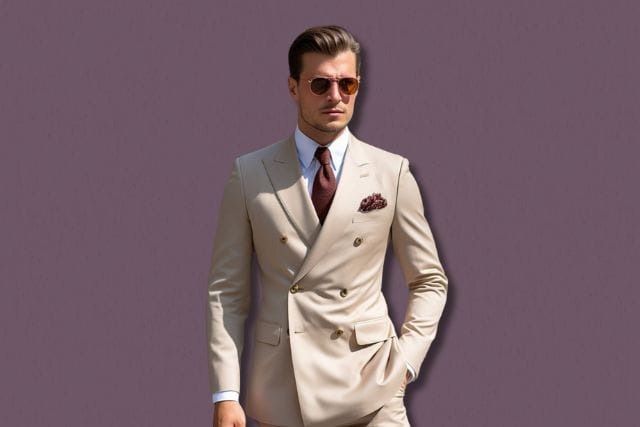Single vs Double Breasted Suit: Which to Choose?

As an Amazon Associate, I earn from qualifying purchases
When it comes to men’s fashion, the debate between single-breasted and double-breasted suits has been a long-standing one. Both styles have unique characteristics and can be suitable for different occasions.
In this article, we will delve into the key differences between Single vs Double Breasted Suit. We will cover button configuration, lapel styles, and the number of buttons. We will also discuss formality level and appropriate occasions to wear each style.
Defining the Double

Before we can compare notes fairly, it pays to know what the contestants are all about:
A single-breasted suit is the quintessential business suit. It’s the uniform of choice for professionals around the globe – versatile, classic, and understated.
Double-breasted suits, on the other hand, exude an air of old-world charm and formality. They are often associated with more formal dress codes, great for hooks and hinging points on life’s red carpets.
A Brief History
Single-breasted suits began their rise to prominence in the early 20th century. This marked a departure from the more elaborate and heavier styles of the Victorian era. By the 1930s, it had cemented its place as the business suit of choice.
Double-breasted suits, which have existed since the 19th century, enjoyed a surge in popularity during the 1930s and 1940s when they were a red carpet favorite. They fell out of mainstream favor in the mid-20th century but experienced a modern renaissance in the 1980s.
Button Configuration

Onto the nitty-gritty. The buttoning configuration might seem like a small fry, but it has a big impact on the overall look of your suit.
The buttoning for the single-breasted suit is straightforward. There’s usually just one row of buttons down the front. Typically, this row contains two or three buttons, with a notched lapel signaling a more relaxed look and a peaked lapel signaling a bit more boldness.
Double-breasted wonders boast two columns of buttons—functional and decorative—and a fully overlapped front. The most common configuration is the “6×2” style, which indicates the suit has six buttons with two to close.
Lapel Styles
Lapels are like the suit’s expression. They can whisper understated elegance or shout dapper charm.
Notching It Up
With a single-breasted, expect the notched lapels. These are your everyday, all-occasion companions. They’re seen on most single-breasted suits, aligning with a more contemporary and open-collar look.
The Peaks of Performance
Double-breasted suits are often worn with peak lapels, which project an air of formality and authority. Pair them with a sturdy necktie knot, and you’re ready for when mere words might not suffice.
The Fine Line of Lapel Width
The lapel’s width can sometimes go unnoticed, but it’s a subtle detail that speaks volumes.
In the single-breasted category, a modern width is around 3 inches at its widest part. This balance suits most body types and can transition from professional rooms to celebratory dinners.
Double-breasted suits often feature broader lapels, which make a more dramatic statement and complement the suit’s typically more structured silhouette.
Deciphering Formality
It’s like knowing the plot to dress for the part. Formality is where the suits truly play their roles.
A single-breasted suit is your trusty daily workwear and the most common choice for interviews, business meetings, and semi-formal events.
Double-breasted suits are the scene-stealers of the more formal spectrum. These suits command an air of black-tie events, high-level business settings, and any occasion requiring a more significant presence.
Conclusion
Whether you opt for a single-breasted or double-breasted suit ultimately depends on your style, body type, and the occasion.
Both styles have unique appeal and can help you make a fashion statement wherever you go. So, which style suits you best?
FAQ
Can I wear a double-breasted suit for a casual occasion?
While traditionally formal, modern double-breasted suits can be styled for a smart-casual look by choosing lighter fabrics, relaxed tailoring, and pairing them with turtlenecks or open-collared shirts.
Do single-breasted and double-breasted suits have different lapel styles?
Yes. Single-breasted suits usually feature notched lapels, which are more casual and versatile.
What is the standard button configuration for a double-breasted suit?
The most popular button configuration for double-breasted suits is the “6×2” style, which means six buttons in total, with two functional ones for fastening.
As an Amazon Associate, I earn from qualifying purchases
